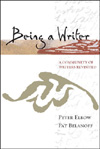Workshop 6
On Purpose and Audience
When it comes to web development, considerations of purpose and audience are also extremely important. Among the hundreds of how-to guides for developing a web site, there is a consensus that web-page development begins with a consideration of your primary purpose and your target audience. Observe, for instance, the role of purpose and audience at the following web sites: Most of the sites that you visit on the web, therefore, contain several clues to suggest precisely who they would like to attract and what they would like to provide for this audience. Most sites neglect to tell you outright exactly who their audience is, and even those sites that DO tell you often fail to appeal to their target audience. The purpose of this activity is to give you practice in finding the purpose and audience for a web site and evaluate how effectively the creators of a web site attend to these concerns.
Main Activity We'd like for you to visit three sites relevant to a particular interest of yours. It can be a topic that you are writing about in class (handgun control, Elizabethan drama, or solid-state physics), a hobby (hunting, shopping, horseback riding), or something that you don't know too much about (stock market, classical music, computer animation). The important thing is for you to find three web sites that pertain to your topic. You will be analyzing the purpose and audience of each site. The following steps will guide you through this process: - Use a search engine such as Google.com or Yahoo.com to find sites relevant to your topic.
- If you have several sites that seem equally interesting to you, try to select ones that are similar, but seem to have slightly different audiences or purposes in mind. For instance, if your topic is soccer, don't choose a site that sells soccer apparel and compare it with a site that reports soccer news: they are too different! Instead, choose three that do more or less the same thing, but in a slightly different way.
- Once you have three sites, open each site up in a different window of your web browser, so that you can move any one to the foreground with the click of your mouse.
- Now open a word processing window and enter the title of each site, separated from one another by several carriage returns.
- Begin by taking some notes about what kind of person would use this site and for what purposes it might be used. Here are some hints:
- If there is an "about this site" link or a "purpose" link, these are usually very helpful in getting you started. Summarize this text in your word processing window.
- If your sites are selling something, who would buy this merchandise? Is it targeted at people with a lot of disposable income or bargain hunters? Does the company do all of its business over the Internet, or does it have a physical store/stores as well?
- If the site provides information, what kind of people would be interested? Does one need specialized knowledge to understand the information provided? How is the site funded (university, organization, grant, advertising)?
- How is the site organized? Does it provide a clear index of content on the left-hand side, or is one encouraged to discover the site's organization by exploring?
- If they have advertisement banners, speculate about what kind of people would be interested in the advertised products.
- What, if any, communicative role do the colors and images perform? Some images are iconic and perform a very practical role. Others are informative, telling us what words cannot. Still others are there to create a mood or impression. This is particularly true of "background" images that are wallpapered or appear in a column. What are the implications of a site that has a dark background and relatively bright or white text?
- Do you suspect that the web site succeeds in attracting its target audience? Why or why not?
- When you feel you have a good sense of both the purpose and audience for each site, look over your notes and attempt to compare and contrast your three sites. The paper that you compose should not discuss each of the sites in separate sections; it should discuss various aspects of audience and purpose in separate sections. Your sites should be compared and contrasted within each section.
- Ask your teacher about how long your essay should be. We would recommend that you compose at least two typed pages for this exercise.
|



 2003 McGraw-Hill Higher Education
2003 McGraw-Hill Higher Education